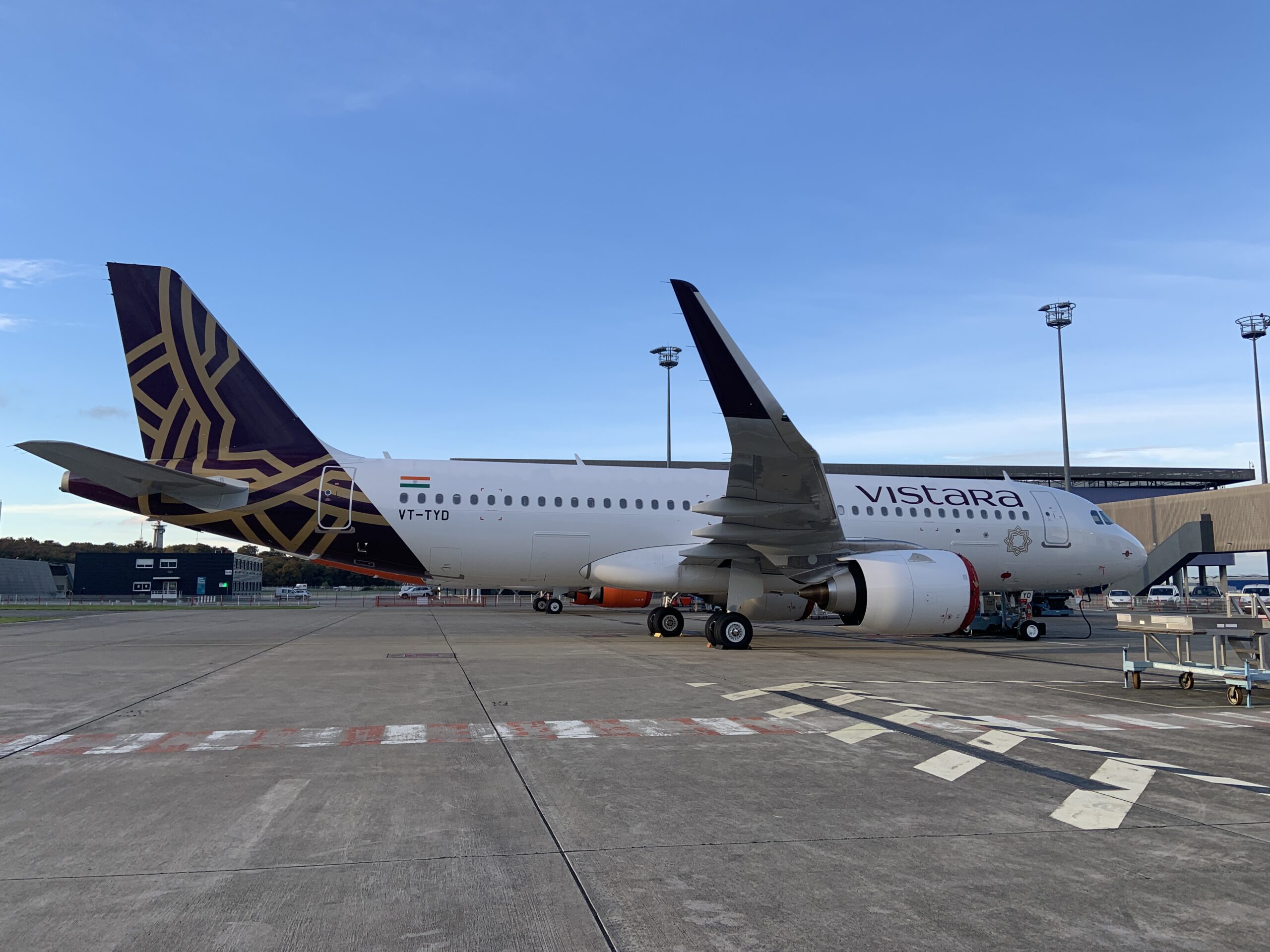
FFieBNSXoAINjie scaled
About eight years ago, Singapore Airlines and India’s Tata Group joined hands to launch an airline together. While the corporate entity is called TATA-SIA airlines, reflecting the brand of both the shareholders, the airline was named Vistara. Last weekend, Vistara celebrated seven years in service. Vistara celebrates seven years but remains loss-making.
The joint venture to form the airline was announced in September 2013, but it wasn’t until August 2014 that it got its name. Vistara draws from the Sanskrit word vistaar, which means Expansion. Tata Sons and Singapore Airlines hold 51 and 49 percent in the airline respectively, with a largely independent mandate to build an airline out of India. However, the CEO of the airline, and some other key personnel, are deputed from Singapore Airlines from time to time.
On January 9, 2015, Vistara flew its first flight between Delhi and Mumbai, and this January 9, the airline completed seven years of operations. In these seven years, including almost two years marred by Covid-19 which lead to a 60-day grounding of air traffic in India, Vistara has flown 30 million passengers since inception and a 50 aircraft-strong fleet.
Vistara launched operations with Airbus A320 aircraft in 2015, moving to induct Airbus A320neo aircraft in May 2017. In 2018, the airline signed a letter of Intent (LoI) for thirteen A320neo’s to add to its existing portfolio of 21 Airbus airplanes, and committed to an additional 37 A320neo-family aircraft from lessors. The combined agreements would add 50 A320neo-family aircraft to Vistara’s fleet. Vistara also signed on for the purchase of six Boeing 787-9 aircraft with four options at the same time.
In 2019, the airline moved to capture the vacuum created by the downfall of Jet Airways, by moving to induct Boeing 737-800s available almost immediately from lessors to grow across the country. The airline inducted ten 737-800s into its fleet and overnight added many new destinations. The airline also used these aircraft to launch its international operations in August 2019, operating its first flight to Singapore.
Vistara’s first Boeing 787-9 aircraft was delivered right before the pandemic, in February 2020, and Vistara has received one more since then. The airline is unable to add more flights to its 787 intercontinental schedule unfortunately with the FAA embargo on 787 deliveries to customers right now from Boeing.
Market share has grown to 7.5 percent
Even as Vistara navigated the aviation industry’s worst-ever crisis, COVID-19, it continued to grow in a measured way towards its vision and long-term plans. The airline registered a growth of 3.3 percentage points in market share, since July 2020, having grown from 4.2 percent in July 2020 to 7.5 percent in November 2021.
Vistara expanded its fleet by over 25 percent since April 2020, to have 51 aircraft in its fleet as of date, and has significantly grown its global network to include seven new destinations across Asia, Europe, and the Middle East. The airline also ensured that all 4.000+ jobs at Vistara remained protected from the impact of the pandemic.
Over the last two years, the airline has also introduced multiple products and service enhancements, including but not limited to onboard WiFi connectivity (on the Boeing 787-9 and Airbus A321neo aircraft), Gate-to-Gate service, fully-flat beds in its Airbus A321neo’s, and Boeing Dreamliner 787, providing a premium and world-class flying experience to travelers.
Vistara has filed paperwork to launch flights to the USA and also has the permission from Department of Transport now, however, the airline is going to be unable to do so unless it is able to induct more 787-9 aircraft in its fleet. A certain technicality may force Vistara to operate these aircraft with a halt, though. The airline did not mandate the installation of crew bunks on the currently ordered 787-9 aircraft, which means that the aircraft will either have to be operated with reserve seats for crew on ultra-long-haul missions, or the airline needs to get 787-9 aircraft which have crew bunks to be able to operate these flights.
Since it launched services seven years ago, Vistara has never been profitable. The carrier ended the financial year 2021 in March with a Rs 1.612 billion loss, an improvement over the Rs -1.814 billion the previous year. In 2016, it suffered a loss of Rs 400 million, with losses increasing by the year since then. Analysts say that Vistara’s cost structure is too high and measures are taken to reduce costs and improve earnings. Its shareholders Singapore Airlines and Tata Group have backed the airline in 2021 with Rs 1.2 billion in additional funding, while Vistara also secured a loan of $110 million.
Views: 6



